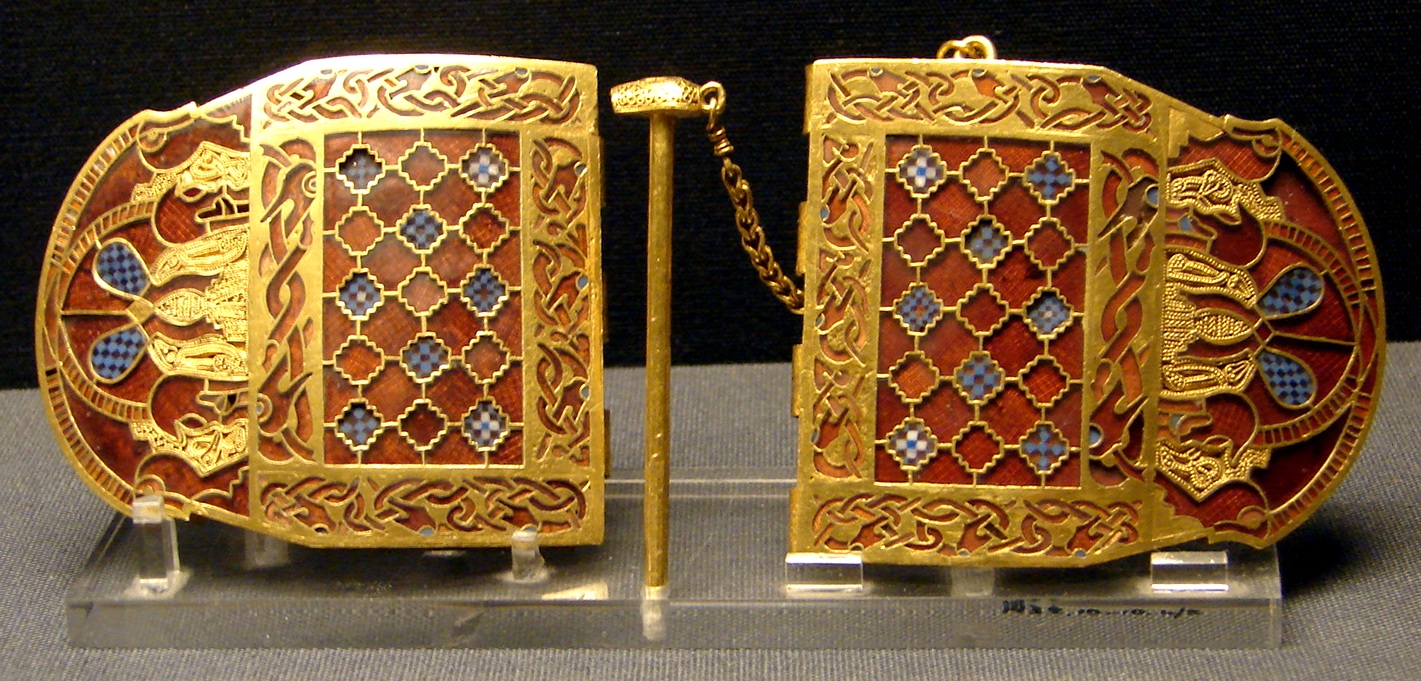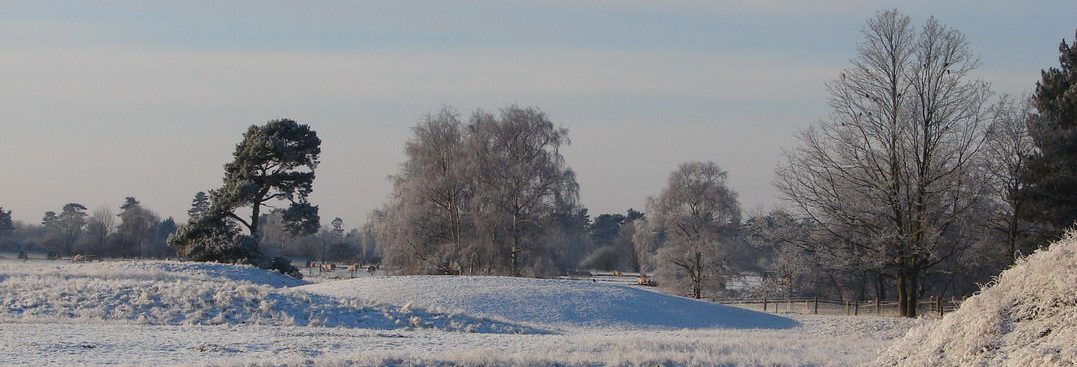The Royal Shoulder Mounts

One of the pair of original shoulder clasps on display in the British Museum (© Sam Newton 9th Nov. 2009)
Formerly worn across the the royal shoulders, these mounts are perhaps the most outstanding of all the masterworks of the royal wondersmiths. Each one of this perfect pair is just on 4.5″ long and 2.25″ wide and made of of gold up to 95 per cent pure. One of the pair is inset with 498 gems and 249 lidded gold cells; the other contains 514 gems and 262 lidded gold cells.
Each clasp is curved to sit neatly on the shoulder and hinged and joined in the middle by an animal-headed gold pin attached to the body of the clasp by a gold chain. This pin can be drawn out to all allow the two halves to be separated which suggests that the clasps were attached to some form of protective garment which the king put on over his head. The underside of each half was bound to the garment by means of D-shaped gold loops.
The cloisonné designs are centred on fine carpet patterns of garnet, millefiori and blue glass gems surrounded by a garnet and blue glass zoomorphic interlaces perhaps based on stylised garfish.
Two pairs of cleverly interlocking boar emblems appear at the ends of each clasp. These are depicted in gold and plate garnets underlain by gold foils embossed with light-catching patterns carefully angled to mirror one another. Smaller, lighter garnets are used to emphasise the arching line of bristles along their backs. The foreshoulders, naturally very thick-skinned on elder boars, are accentuated in millefiori glass and their tusks with blue glass. Gold filigree serpent shapes entwine between the boars’ heads and legs. Lidded gold cells can be seen here behind the rear trotters and beaded gold cells on the inside of the curling tails.
The boar-emblem was regarded as a very potent amulet of protection in early England and throughout the Northlands. The emblem is usually associated with helmets in both archaeology and literature (for more information, see the discussion on pp.39-43 of my book and the references cited there) but the Sutton Hoo shoulder clasps provide the richest and most artistically innovative example of the emblem.
Boar-emblems also adorn the Royal Helm.
© Copyright Dr Sam Newton AD 2000, 2014

